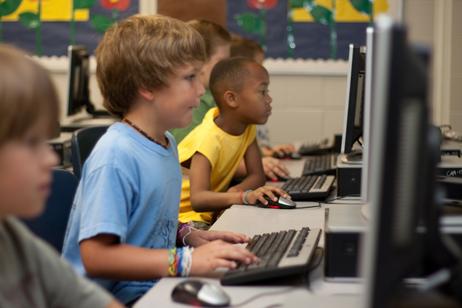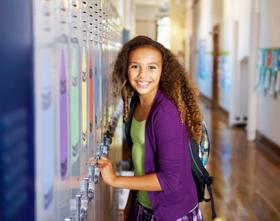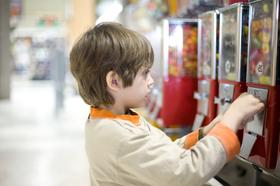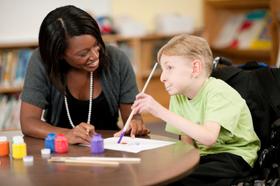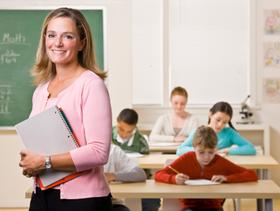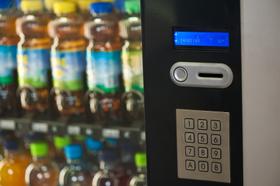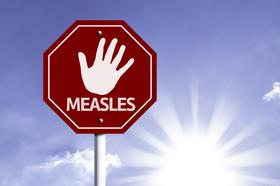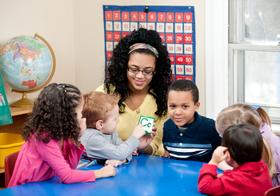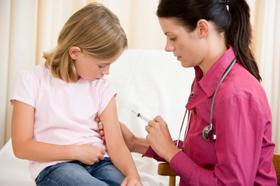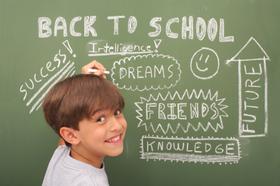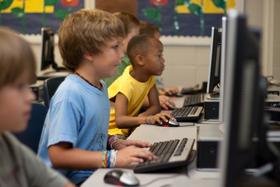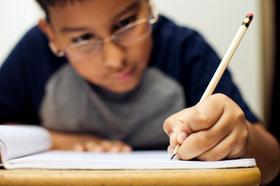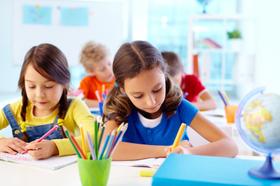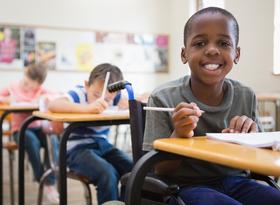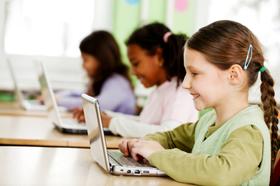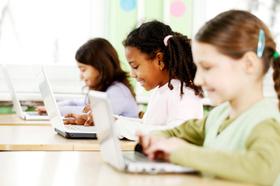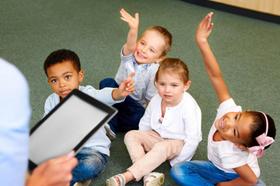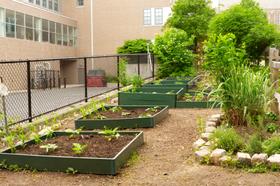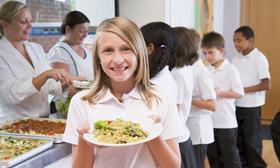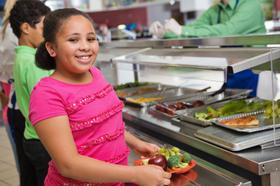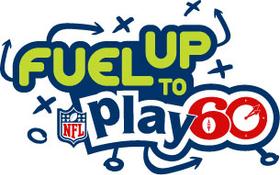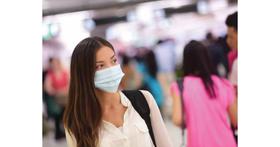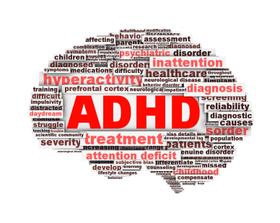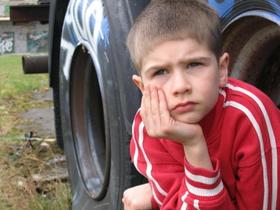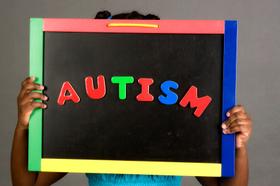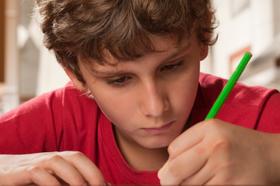After a year and a half struggling to survive a global pandemic, the world is finally starting to get back to normal. Though challenges brought by the rising Delta variant still exist, many schools are planning to return to in-person instruction in the coming fall. This news comes as a welcome relief to parents who have had to juggle supervising their child’s remote education while continuing to work their own jobs.
Though the COVID-19 pandemic left no one unaffected, it exacerbated a number of existing issues within the public school system and created some new challenges. Returning to school in the fall of 2021 won’t be smooth sailing and parents had better start preparing themselves (and their children) now to ensure as seamless a transition as possible.
In this article, we’ll explore some of the effects the COVID-19 pandemic had on public school systems and talk about what the future holds. We’ll also provide helpful tips for students, parents, and educators as they anticipate their return to school in the fall.
Impact of the Pandemic on Public Schools
In March of 2020, the World Health Organization declared the spread of COVID-19 a worldwide pandemic. Being in the middle of their second semester, schools across the country (and around the world) were sent scrambling to make adjustments. Many schools closed for in-person instruction entirely, switching to virtual learning, and many parents withdrew their children from schools entirely in favor of teaching them at home.
In a March 2021 article published on Brookings, Daphna Bassok, senior fellow in the Brown Center on Education Policy, explores the impact of a year-long pandemic on education. She also draws some conclusions about what there is to be learned and where we go from here.
The first point Bassok makes is that, in the United States, schools provide much more than just education. In many cases, schools provide free and essential care for children while their parents are at work. When schools shuttered their doors in 2020, many families found themselves without this form of subsidized care which put a great deal of stress on families and forced many parents (especially mothers) to leave the workforce entirely.
Bassok also comments on what she calls the “arbitrary distinction we make between the care and education of elementary school children and children aged 0 to 5.”
She notes that children actually learn more in the earliest years of their lives than any other but public investments in early education and childcare are horribly insufficient. The COVID-19 pandemic hit the childcare sector very hard and while the passage of the American Rescue Plan brought hope for a long-overdue investment in this area, a one-time infusion of funding isn’t enough. Bassok hopes the pandemic will bring about a turning point in how the U.S. invests in childcare and early education.
Lauren Bauer, fellow in Economics Studies and in the Hamilton Project, adds that the pandemic also exacerbated the already significant food-insecurity crisis.
Right before the COVID-19 lockdown, Bauer published a piece on how to prevent a worsening of this crisis, arguing that if schools closed, there needed to be an aggressive solution to makeup for the resulting loss of the School Breakfast Program and National School Lunch Program. Fortunately, the Pandemic EBT program helped replace missed school meals with grocery store vouchers. In evaluating the efficacy of this program, researchers found a 30% reduction in the number of households reporting that their children didn’t have enough to eat.
While childcare and food insecurity were two major challenges brought forth by the pandemic, it’s important to consider the strictly educational impacts as well. Helen Shwe Hadani, fellow in the Center for Universal Education and in the Metropolitan Policy Program, comments on the academic learning losses as well as the developmental effects of ongoing social deprivation.
Hadani comments that learning losses in reading and math were already a growing concern in the U.S., particularly among children living in low-resourced communities. The effects of ongoing social deprivation, both in and out of school, are harder to predict but just as significant. Hadani notes that, “A core part of children’s social experience – interacting with other kids in school and on playdates – has been stripped away and disappointingly replaced with virtual get-together and pandemic school.”
How Did Public Schools Respond to the Pandemic?
It’s one thing to talk about the impact of the pandemic on America’s public schools in theory and another thing to examine the actual changes. The National Conference of State Legislatures (NCSL) compiled a resource documenting public education’s response to the COVID-19 pandemic.
Let’s take a look at the five key points in that document.
1. Reopening Public Schools
In the spring of 2020, schools around the country were closed for in-person instruction and even nearly a year and a half later, educators are struggling to determine how and when to safely reopen schools. Recent research suggests that schools are not a primary source of viral spread, but many educators and public health advocates still oppose the reopening of schools without a significant investment in safety measures to reduce the risk for teachers, students, and staff.
The CDC published an Operational Strategy for K-12 Schools in February 2021 – it was the first federal document outlining a plan for reopening schools. It outlines three essentials for safe operation:
- Layered mitigation strategies including masks, physical distancing, and contact tracing
- Delineated indicators of community transmission
- Phased mitigation strategies based on community transmission indicators
In locations where community spread is under 50 cases per 100,000 people over 7 days, the CDC supports in-person instruction. Schools in areas where spread is above that level should follow a hybrid learning model with mandatory physical distancing. In this document, the CDC also states that schools should be “the last institution to close and the first to open when communities implement non-clinical mitigation measures.”
2. Testing and Vaccination
Since the start of the pandemic, public health officials have stressed the importance of widespread testing and contact tracing. Many schools that operated with in-person or hybrid models in the fall of 2020 included testing and contact tracing protocols in their plans for reopening. Current guidelines from the CDC recommend testing symptomatic individuals and their close contacts and advocate for using testing as a tool to identify outbreaks and limit their spread.
To help create a testing infrastructure in local communities, the Rockefeller Foundation got together with state leaders to create the State and Territory Alliance for Testing (STAT). There are 22 participating states, all of whom work together to institute rapid testing in schools. These efforts are supported by President Biden’s commitment to reopening schools and his pursuit of federal funding for the rapid testing of teachers, staff, and students.
3. Remote Instruction
Throughout the duration of the pandemic, remote and hybrid learning have become commonplace. As case counts remain high in certain parts of the country (particularly with the rise of the Delta variant), these instructional models may continue to be part of students’ lives. Data from the Center for Reinventing Public Education (CRPE) showed that over half of school districts started 2021 with some form of hybrid or distance learning, but numbers were much higher in students living in or near poverty.
Halfway through the spring 2020 semester, data indicated that only 14% of school districts were still operating fully remotely but high-poverty districts were the most likely. As of March 9th, 2020, 29% of urban and 20% of suburban districts were still operating remotely but only 7.4% of rural districts. Divergences like these raised concerns that race- and income-based educational disparities would grow during the pandemic. The CARES Act provided billions of dollars in funding to support K-12 education, much of which was used to address this digital divide.
4. Learning Loss, Assessments, and Accountability
When schools first closed in the spring of 2020, educators immediately realized the impact on spring exams. As schools shifted to online instruction, many state leaders called for exemptions from federal testing requirements. In March 2020, the U.S. Department of Education started offering waivers from testing requirements in all 50 states under the Every Student Succeeds Act (ESSA). In 2021, the debate over federal and state mandates for high-stakes testing remains intense.
In February 2021, the U.S. Department of Education announced that they would not be offering blanket waivers from federal testing requirements. Schools will still be required to administer these exams but may be offered some flexibility in terms of how they do so. Exams may be shortened, delayed, or administered remotely as state officials and educators attempt to balance the need for essential data with concerns about enforcing such strict requirements in a disrupted school year.
5. Attendance and Instructional Time
While most schools have attendance requirements, the switch to remote and hybrid learning during the pandemic highlighted the fact that many don’t actually monitor it. State accountability systems utilize student attendance rates when establishing school ratings, but the COVID-19 pandemic upended these practices. Before the pandemic, schools measured attendance and instructional time by making sure students were physically present in classrooms – this became much more of a challenge during the pandemic when teaching transitioned to online.
Throughout the pandemic, school districts weren’t able to use typical measures to track attendance or instructional time. According to an October Education Week survey, unexcused absences doubled during the pandemic, especially among low-income students and students of color. Moving forward, most state reopening plans include some kind of plan for measuring instructional time and attendance, even in schools where remote learning is likely to continue.
Practical Post-Pandemic Tips for Parents
The 2020-2021 school year was nothing like expected and unlike any other school year. Millions of students spent the majority of the year (if not all of it) learning remotely, so the return to in-person education in the fall of 2021 is likely to be a bit rocky. USA Today published a list of practical tips for parents compiled by educators, administrators, and school counsellors to help parents overcome the foreseen challenges of the upcoming school year.
Here are some of those tips:
1. Know when to ask for help.
One of the most commonly spread messages throughout the pandemic was, “we’re all in this together.” While things may slowly be getting back to normal, this saying till holds true. A successful return to in-person education requires parents, teachers, and other educators to all work together for the benefit of the students. As a parent, you shouldn’t be afraid to ask for help whether it’s assisting your child with their homework or getting them the mental health support they need.
2. Don’t try to do it all at once.
It’s completely normal and understandable for both parents and students to experience a little anxiety up on returning to school in the fall, but you can manage that anxiety by setting small, reachable goals. Have an open and honest conversation with your child about the return to school and ask them what they’re worried about. Together, the two of you can set small goals for the first few days of school and build on them throughout the school year.
3. Get yourself organized and into a routine.
After a year of remote learning, many families find themselves unsure how to make a smooth transition back to in-person education. The first week or two are bound to be a bit messy, but you can help keep yourself and your family on track by creating a routine at the very beginning and getting organized with to-do lists. If you have a partner, decide how best to share the morning duties and make sure your kids have their own to-do lists to tackle each morning in preparation for the school day.
4. Do your research ahead of time.
Whether your child is returning to their old school or switching to a new one, it’s important to do your research ahead of time so you know what to expect. Contact the educators and administrators for information about new school policies and network with other parents who are in the same boat. Many schools are offering virtual orientations for new students and have created detailed guides on things like mask policies, social distancing, etc. The more you can learn about your child’s school, the better prepared you’ll be, and your child may feel less anxious as well.
5. Take advantage of school-offered resources.
Public schools offer a wide variety of support services, so take the time to familiarize yourself with them and take advantage of as many as you can. Resources are available for parents as well as students, and take the form of online guides, in-person support personnel, and more. Whether your child is struggling to learn how to study or curious about joining an extracurricular activity, these support services can help you make the most of your child’s school years.
6. Protect your child’s mental health.
A year-long pandemic is sure to take a toll on your child’s mental health, so it’s important to keep tabs as your child returns to school. If your child is feeling stressed, anxious, or depressed, encourage them to speak up and share their feelings – if not with you, with a school counselor. Your child’s mental health should be a top priority and you should keep in mind that academic success is more likely to occur if your child’s mental health is supported first.
7. Be present and proactive in supporting your child’s education.
Though the return to in-person education means that many parents will be able to resume their normal work activities, it shouldn’t be an excuse to take a back seat role in your child’s education. Pay attention to communications from your child’s school and be in contact with your child’s teachers. Be available to your kids when they come home, if only to hear about their day. Offer help with homework and stay involved in your kids’ education as well as their extracurricular activities.
As you and your children prepare for the return to school this fall, it’s important to keep an open mind. Don’t expect too much too soon and do your best to be flexible. The transition is sure to be anything but perfect, so there’s no sense in expecting it to be. Stay in communication with your child’s school and with your children to make the transition as smooth as possible.

